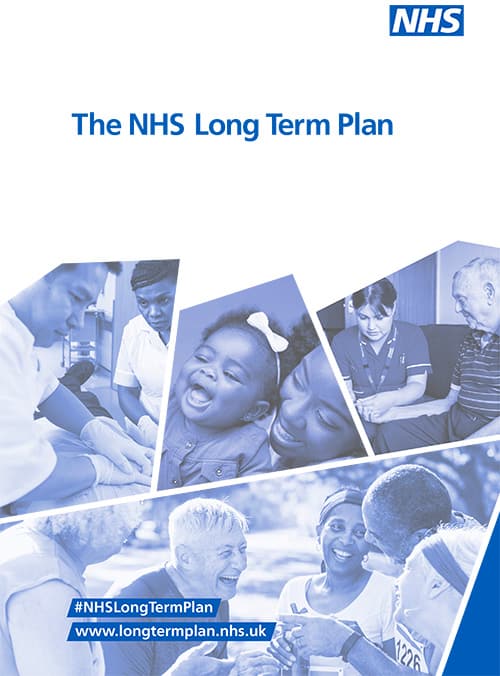Long-term NHS plan promises to expand Personal Health Budgets and use of wearable monitoring tech

Addressing the challenges the NHS currently faces, the plan outlines how the organisation will work alongside local partners, patients, staff and the public to make the plan a reality.
The NHS Long Term Plan was drawn up by a range of people, including frontline health and care staff, patient groups and other experts.
The long-term plan comes following the Budget announcement in October 2018, where Chancellor Philip Hammond said that the Government would increase the NHS’ budget by £20.5 billion each year by 2023-2034.
Prime Minister Theresa May said: “The launch of the NHS Long Term Plan marks an historic step to secure its future and offers a vision for the service for the next ten years, with a focus on ensuring that every pound is spent in a way that will most benefit patients. This will help relieve pressure on the NHS while providing the basis to transform care with world-class treatments.”
Personal Health Budgets
One of the main points highlighted within the NHS’ 10-year plan is the acceleration of the roll out of Personal Health Budgets (PHBs), which allow people to have greater choice and control over how their care is delivered.
The PHBs will include provision of bespoke wheelchairs and community-based packages of personal and domestic support.
Wearable monitoring tech
One of the areas the NHS intends to expand is the utilisation of wearable monitoring equipment. This technology allows users to wear the equipment at home and can help the NHS predict, detect and prevent events that could have otherwise led to a hospital admission.
Examples include a set of digital scales to monitor the weight of someone post-surgery, a location tracker to provide freedom with security for someone with dementia, and home testing equipment for someone taking blood thinning drugs.
Personalised care
According to the Long Term Plan, the NHS will also look to support more people to manage their own health during the next five years. This will help people with diabetes, respiratory issues, maternity and parenting support, and online therapies for common mental health problems.
As part of its plans to increase the amount of personalised care people receive, the NHS Comprehensive Model of Personalised Care is now being implemented across a third of England. The NHS will roll out the Personalised Care model across the country, aiming to reach 2.5 million people by 2023/24.
By September 2018, over 200,000 people had joined the personalised care programme and over 32,000 people had Personal Health Budgets.



